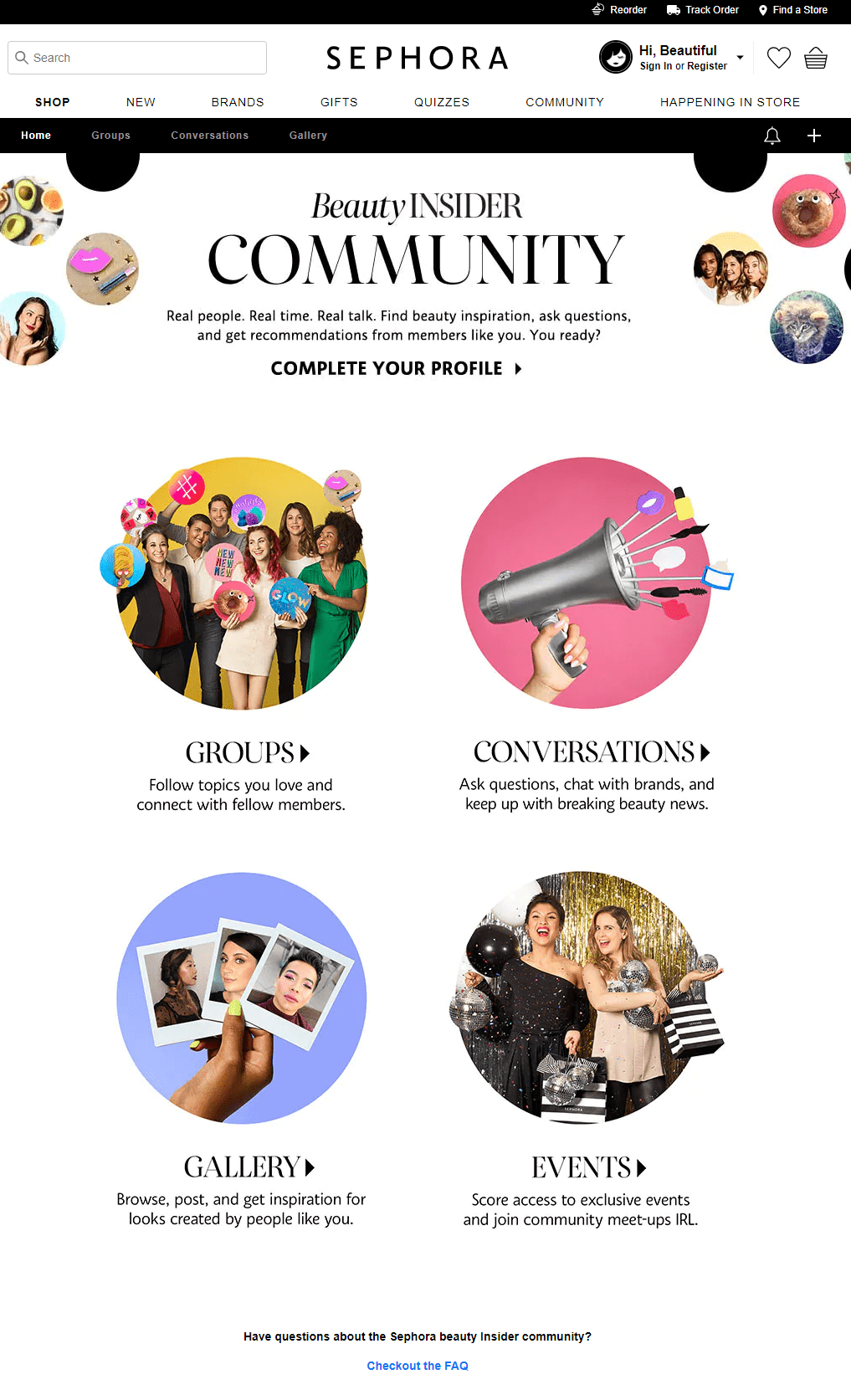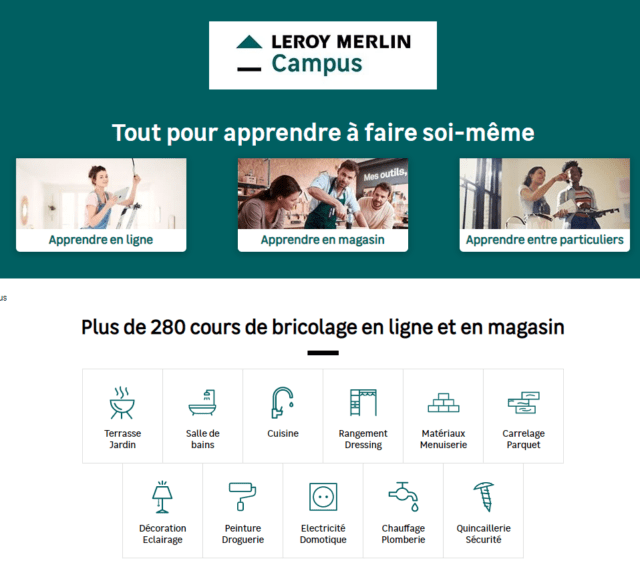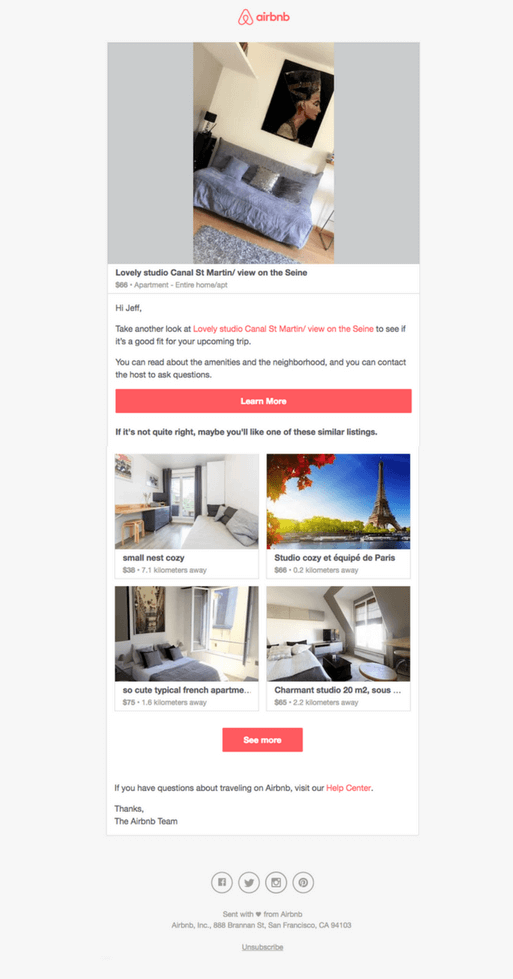

Looking for some inspiration on how to improve your customer relationships? In this article we’re bringing you CRM examples from companies who use customer relationships as a driving force for sales.
Your relationship with customers is one of the most important aspects of your business.
As the name suggests, Customer Relationship Management (or CRM for short) refers to the way in which you manage your customer relationships.
CRM is the combination of strategies, techniques, tools, and technologies used to develop and maintain this relationship throughout the customer lifecycle. The goal of CRM is to drive sales, increase customer loyalty, and to improve the overall customer experience.
I want to try Sendinblue’s CRM software for free >>
A good way to understand the importance and impact of a CRM strategy is to have a look at some of the best ones out there.
We’ve selected three highly successful CRM examples from big name brands and highlighted the key learning points that you can apply to your own business.
CRM example 1: An engaged online community and tiered loyalty program – Sephora
Cosmetics giant Sephora is a champion of CRM.
Its CRM strategy revolves around learning as much as possible about individual customers and bringing them together around Sephora products.
Sephora doesn’t just sell makeup. It also runs an online forum where its customers come together to discuss beauty products and share advice.
Once a member signs up and completes their profile, he or she can interact with both the brand and fellow beauty enthusiasts through groups, conversations, events, and sharing photos.
The information gathered through the online profiles is used to segment members and target them with personalized offers.


Recognizing the most loyal customers
In parallel to this, Sephora also runs a tiered loyalty program to reward its most loyal customers.
The loyalty program, which has over 10 million members, consists of three levels. The idea is that the benefits and personalized rewards increase as one moves up the scale.
Naturally, Sephora is going to have insights into the purchasing habits of the members of its loyalty program. This will allow them to offer personalized gifts on the basis of this information.
Sephora reserves the highest tier of the loyalty program, ‘Rouge’, for members who spend over $1000. Sephora has created such exclusivity and hype around this level that it has in itself become a much-desired status among members of the beauty community.
Sephora’s loyalty program is a prime example of how a brand can capitalize on customer engagement and excitement in order to retain customers via a loyalty program.
Sephora further nurtures the customer relationship when the customer steps into a physical store. Sales representatives scan the loyalty card and then access a CRM system which brings up tailored suggestions for products that customer may be interested in.
This creates an in store customer experience that is both relevant and personalized. On top of that, any information gleaned on preferences during this exchange is going to be saved on the system and added to the customer profile.
Key takeaways from this CRM example:
- Reinforce your digital strategy with physical in store actions for a global marketing approach
- Every interaction with customers is an opportunity to get to know them better. Use what you learn to make personalized offers and suggestions
- Reward your best customers with personalized advantages and gifts to cement their loyalty. Create a feeling of exclusivity around the loyalty status – make it something people aspire to have
CRM example 2: Using value-added content to drive conversions – Leroy Merlin
Leroy Merlin is a chain of French DIY stores. A large part of its relationship marketing strategy is based on inbound marketing.
Leroy Merlin has an entire subdomain of its website dedicated to helping it’s customers accomplish their DIY goals. It encourages engagement with the brand and other members through forums, competitions, and blogs.
One standout aspect of this thriving online community which makes for a great CRM example is the Leroy Merlin Campus. This is a platform of tutorials in both written and video format which explain the ‘how to’ behind all sorts of DIY exploits, everything from replacing a kitchen tile to installing a garden shed.


This educational content works wonders in building customer relationships. It provides value for site visitors in that it enables them to carry out their DIY projects and positions Leroy Merlin as a trusted expert in all things DIY.
When a member is logged in, Leroy Merlin can recover the data of the tutorials visited and suggest personalized offers on the basis of this data.
Monetizing the content
Naturally, Leroy Merlin uses the tutorials to feature and suggest products that are sold by the brand.
While the site visitor learns about DIY, Leroy Merlin capitalizes on this opportunity to highlight their products. Every tutorial lists the necessary material. This is an effective way to influence buying decisions by targeting specific needs in terms of products.
The Leroy Merlin campus proposes three types of class – online (free), in store, and between individuals (both paid).
The in store option provides an excellent opportunity for Leroy Merlin to get up close and personal with a customer, building the relationship in a hands-on and memorable way. You only need to look at the number of five star reviews to see just how much the customers appreciate this initiative.
The trust in the brand built up through these CRM activities is going to support the brand’s wider marketing activities and increase customer retention rates.
Key takeaways from this CRM example:
- Create relevant, helpful content that brings value to customers and grows their trust in your brand
- Use an educational approach to position yourself as a market expert and as a brand that cares about helping its customers achieve their goals
- Analyze the data from content consumed to create personalized offers
CRM example 3: Automating relationship management to streamline the buyer funnel – Airbnb
Automation plays an integral role in the growth of Airbnb.
From the initial accommodation search right up until the reservation confirmation page , Airbnb keeps contact between its employees and its customers to a minimum.
This is because the CRM during this process is completely automated.
Automated communications to accompany the user during the buying cycle
Look at how the brand communicates with a customer who’s logged into his or her Airbnb account during the online reservation process:
- When searching for accommodation, the connected customer receives emails suggesting other accommodation options in the same area
- Airbnb retargets the customer with ads on Facebook and other sites
- During the reservation processes, the customer receives notifications by email, sms, and in-app
- After placing the reservation, Airbnb emails the customer offering the possibility to become an Airbnb host and rent out his or her place while away
- At the end of the trip, the customer receives a survey by email to evaluate the stay


There is also a referral program for travellers in which they can earn travel credits by referring friends to become new users on Airbnb. This is an effective way of acquiring new customers and retaining existing ones.
All of these communications are automated. Typically, if all goes well throughout the process, there is no interaction between Airbnb employees and travellers.
By automating CRM in this way, Airbnb saves time and can focus on other initiatives such as building its community and brand awareness.
Key takeaways from this CRM example:
- Automate conversions using retargeting ads and automated emails
- Automate an entire sequence of emails designed to accompany your customer during the buying process
- Use the time you’ve saved thanks to automation to concentrate on more strategic aspects of your marketing
Conclusion:
These are three CRM examples that share certain similarities but are ultimately quite different from each other.
These companies use a number of techniques to optimize CRM including the creation of online communities, tiered loyalty programs, personalized offers, helpful content, and automated communications.
We hope that these CRM examples have inspired you to rethink and reinvent your current CRM strategy.
If you want to create a CRM strategy from zero then we recommend you read our article on 8 Steps to Creating a CRM Strategy for Your Business.
For more content like this, sign up to our monthly newsletter or follow us on Twitter!
 Deutsch
Deutsch





















Comments
Can I get your email newsletter?
Hi Jeff, you can sign up for our monthly newsletter here. Enjoy! Emma 🙂